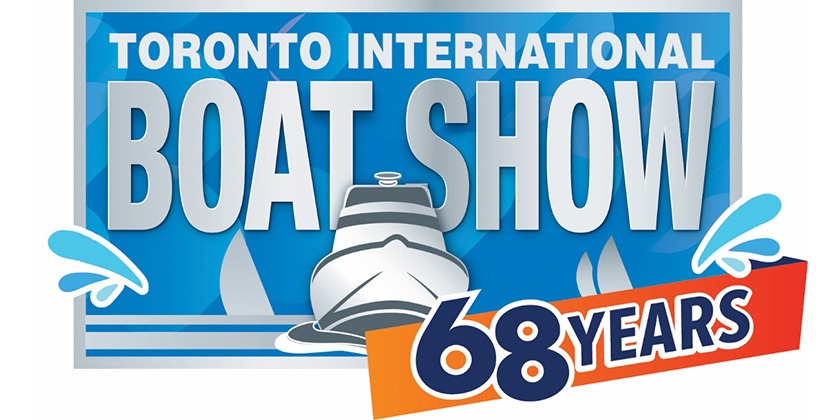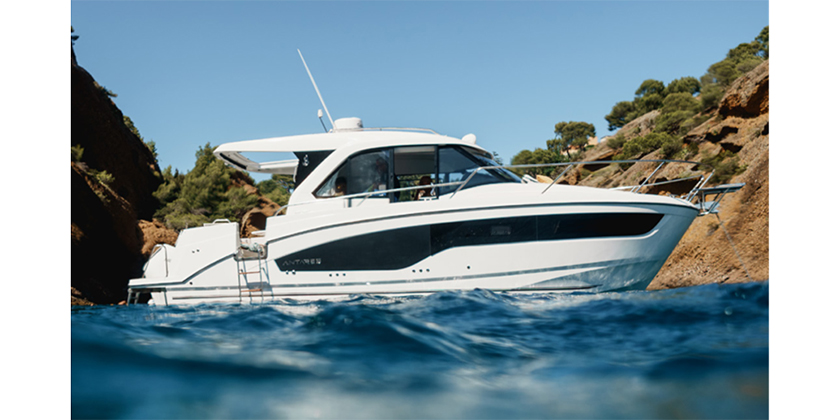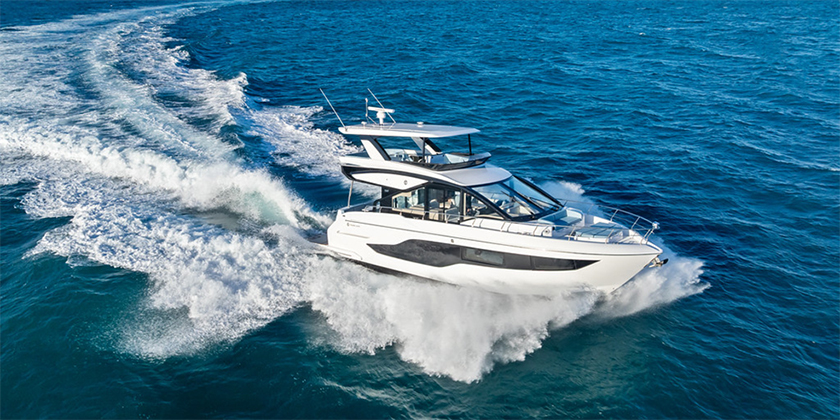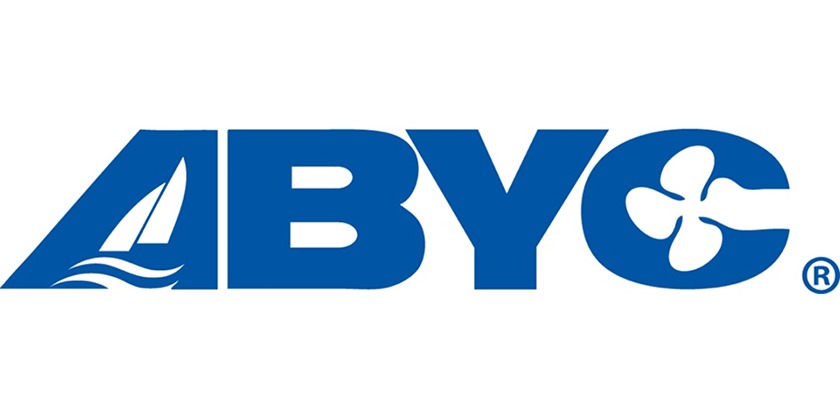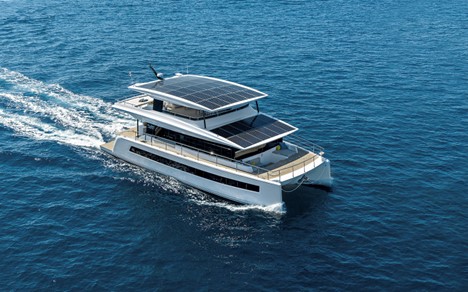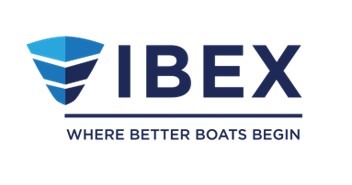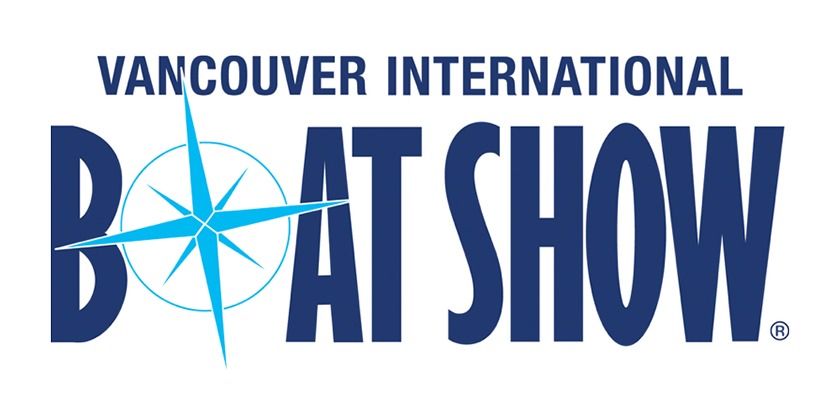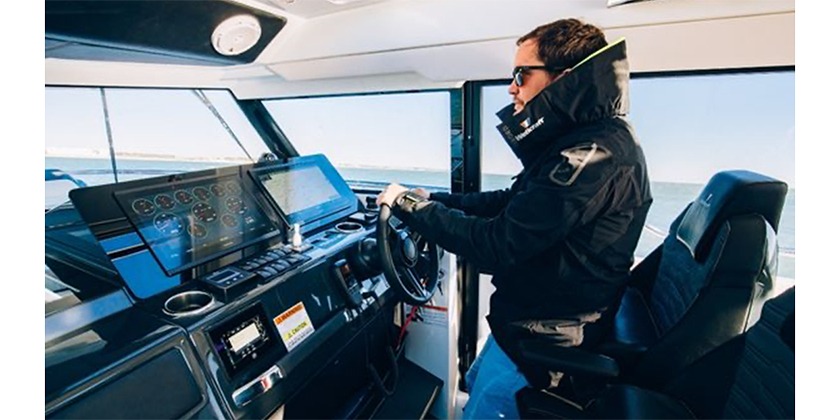POWERING A CONNECTED FLEET IN THE VOLVO OCEAN RACE
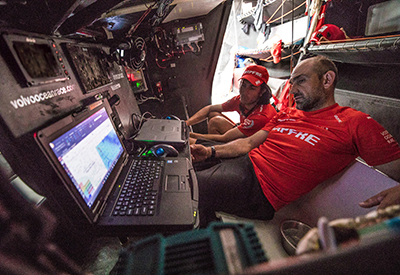
Feb 27, 2018
With a network of sophisticated digital devices, the yachts in the Volvo Ocean Race are among the world’s most connected boats. Volvo Penta’s D2-75 engine provides power for all onboard devices, enabling instant communication between the teams and the race’s headquarters – and thousands of avid fans following the action online – in the thrilling round-the-world competition.
From once-a-week radio calls in the 1970s, to current technological capabilities on the Volvo Ocean 65 yachts that provide the transfer of information in real time, the art of communication has come a long way since the original version of the Volvo Ocean Race. Just as improvements have been made over the years in the physical apparatus used by the teams, so too have great advancements been made in the digital sphere.
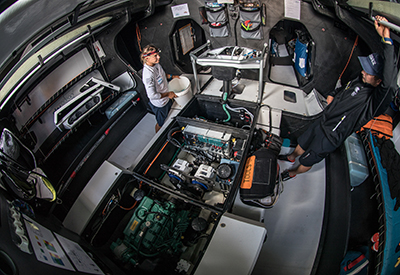 1. Premium technology on the Volvo Ocean 65 yachts enables world-class connectivity of the Volvo Ocean Race fleet.*
1. Premium technology on the Volvo Ocean 65 yachts enables world-class connectivity of the Volvo Ocean Race fleet.*
“There are many different high-tech devices for communication and the latest equipment for recording and analyzing information on the Volvo Ocean 65 yachts, and overall this sophisticated network requires a lot of power,” says Johannes Karlsson, technical support engineer for the Volvo Ocean Race. “With such a complex digital system, around half of all onboard power is used by the various media tools as they transmit a huge amount of data. There are computers at the media desk that are used for editing and sending video, tablets and smartphones, and instruments logging data from more than 100 sources around the boats.
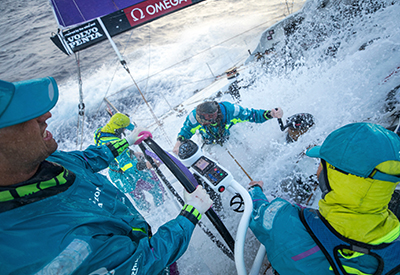 2. Volvo Penta D2-75 engine in a Volvo Ocean 65 yacht.*
2. Volvo Penta D2-75 engine in a Volvo Ocean 65 yacht.*
“The nature of the competition is that performance data is analyzed by the crews onboard and the experts at Race Control headquarters, to make accurate calculations about each team’s progression. The yachts could not have such connected operations between sea and land without electricity, and Volvo Penta’s D2-75 engine is an ideal source of power.”
The toughest of endurance tests
Each of the seven teams in the Volvo Ocean Race 2017-18 competes in a 67ft (20.37m) Volvo Ocean 65 yacht that weighs 12.5 tons, has a rig height of 99.4ft (30.3m), and water ballast of 1,900 liters. When they reach the finish line in The Hague in the Netherlands in June, the teams will have raced for more than 45,000 nautical miles in an epic and grueling voyage lasting nearly nine months. Sailing expertise along with physical and mental endurance, teamwork, and outstanding engineering and technology all play a part in overcoming the powerful forces of the elements.
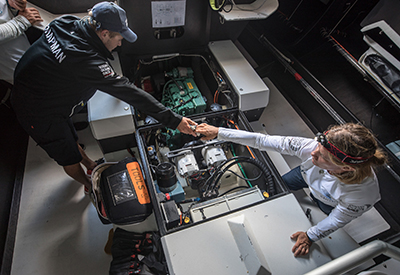 3. The Volvo Ocean Race becomes accessible to fans who can follow the action online, with Team AkzoNobel on deck.*
3. The Volvo Ocean Race becomes accessible to fans who can follow the action online, with Team AkzoNobel on deck.*
The current edition of the race is the sixth time that Volvo Penta has supplied engines for the competition, and the D2-75 with Saildrive has again been selected to power the vessels because it combines high performance, a compact design, and, above all, reliability. As well as powering all onboard communication devices, the engine also provides power for heating and lighting, the safe-drinking ‘water-maker’, and the canting keel; it is also used for propulsion in an emergency or to maneuver the yacht in and out of harbors if there is no wind.
“During the race, each yacht’s engine is run daily for about four or five hours a day, in order to charge the batteries for delivering power onboard 24/7,” says Karlsson. “Because of the demand for power, the engine has to be extremely robust and reliable, and the fact that it has been chosen for the sixth time in the Volvo Ocean Race shows that it can pass the toughest of endurance tests.”
Premium technology
“For the safety of the crews, having premium technology is vitally important,” says Jordi Neves, chief digital officer for the Volvo Ocean Race. “The Volvo Ocean 65 yachts have been upgraded for this race with the number and variety of ways in which data can be processed. The race is in continuous evolution in developing state-of-the-art technologies with the Volvo Ocean Race partners, to create intelligent systems.”
The Volvo Ocean 65 yachts are connected to the Race Control headquarters in Alicante, Spain, sending data, photos and videos. Information is transmitted from more than 100 onboard sensors and instruments, including scientific material recorded by black boxes and satellites, phone-calls and data sent via smartphones and tablets, and media accessed from fixed and 360-degree cameras and drones. The information is processed both onboard and onshore, allowing the teams and Race Control experts to build up a complex picture of how each boat is performing and predict the fastest route within safety margins. Analysis is made of information such as each yacht’s speed and geographic position, weather conditions including wind direction and speed, wave height, G-force effects, and heel angle. The technology is used primarily to assist each team in competing in the race effectively, and for ensuring onboard safety in creating alerts for troubleshooting or in an emergency situation.
More exciting, more interactive
An additional benefit of having a sophisticated technological network is that information can be uploaded to the Volvo Ocean Race digital platforms for real-time tracking, and crew members and Onboard Reporters can send information via social media such as Twitter and Instagram.
“As the technology and the ability to digitally connect the boats to land has become ever more sophisticated, it means that fans online can easily see what’s going on and really feel like they’re in the middle of the action,” adds Neves. “The whole race becomes more accessible, more exciting, and more interactive.”
Connectivity for the future
The engine is a vital part of the race and demonstrates how providing power for connected digital systems is an increasingly important aspect of boating.
“The Volvo Ocean Race boats are a world-class example of a fully connected boat,” says Johan Carlsson, chief technology officer at Volvo Penta.
“We see connectivity as becoming more and more important for the future of leisure boating. Just as the teams in the Volvo Ocean Race are able to use the best technology for fast and reliable transfer of information, we know that other professional sailors, captains and boat operators also want the latest technological capabilities and connected devices in their vessels.
“Having a connected boat helps ensure both optimum safety and enjoyment, and it is our ambition at Volvo Penta to make that happen. We want customers with any size vessel to move towards being able to stay in touch with their boat from onshore, just as the Volvo Ocean Race is in touch with the Volvo Ocean 65 fleet.”
To learn more about life onboard the Volvo Ocean 65 yachts and Volvo Penta’s products, marine enthusiasts are encouraged to visit the race village in any of the upcoming stop-over ports: Auckland, Itajai, Newport, Cardiff, Gothenburg, and The Hague. To see the action in the Volvo Ocean Race, go to www.volvooceanrace.com


